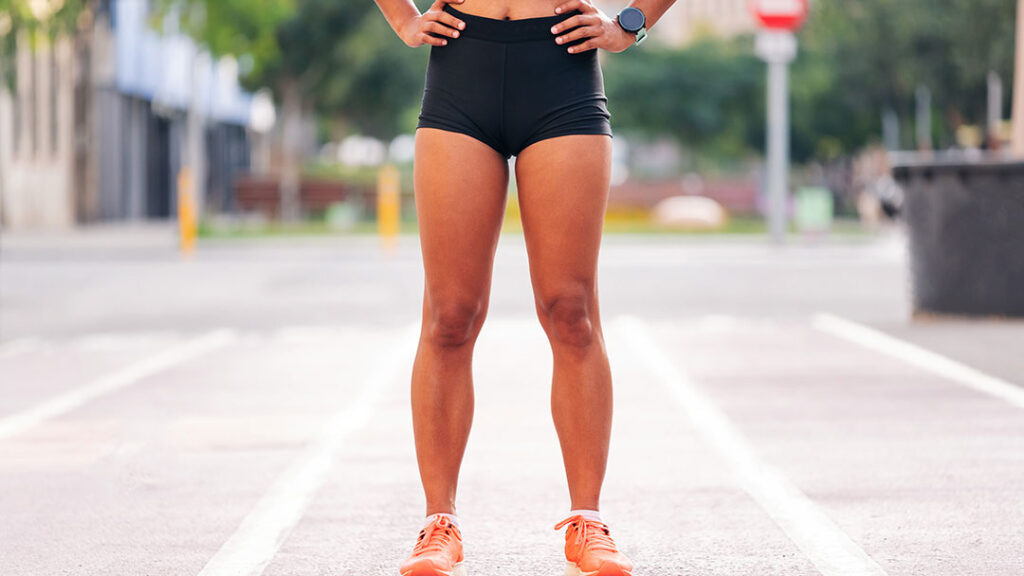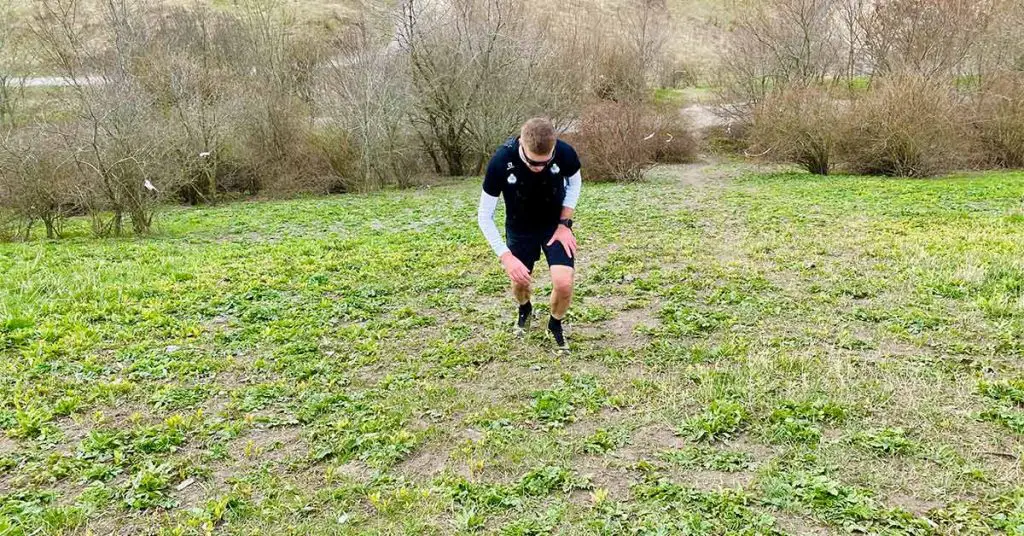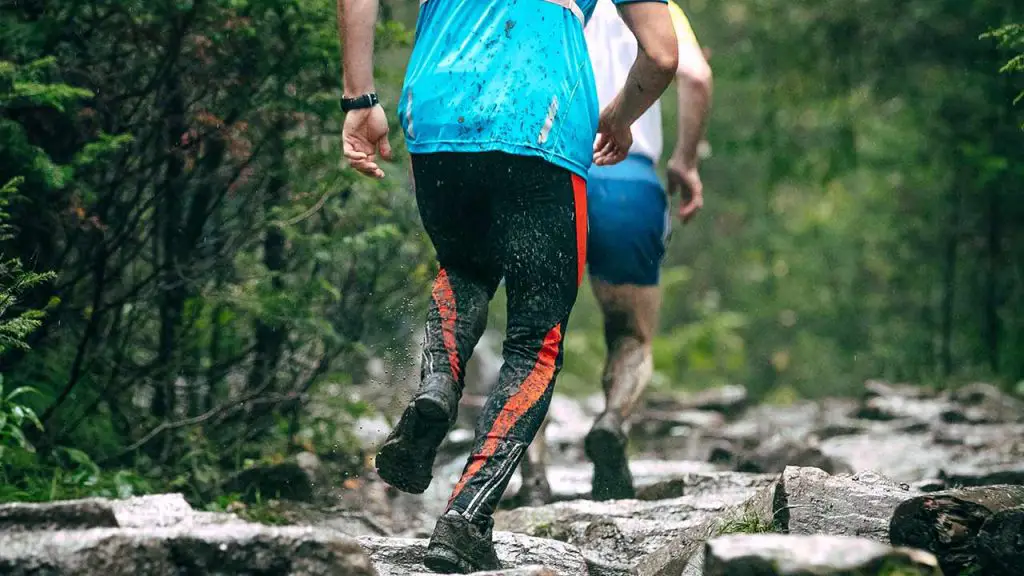Estimated read time: 4 minutes.
Running is a great way to stay in shape, and many of us jump onto a treadmill or take up jogging for the express purpose of losing weight, slimming down and toning our legs. But what happens when it comes to size? Does running make your legs bigger, smaller – or does it have no effect at all?
In this blog post, we’ll explore how running can affect your leg muscles and if you can expect any changes in size as the result of consistent training. Along the way, we’ll refer to the different types of muscle fibers (Type I and Type II) that are created through distance vs. sprinting-style running techniques.
So let’s get started – keep reading to learn more about whether running can change the shape and size of your legs!
Understanding the Different Types of Muscles Fibers in Your Leg Muscles
Your leg muscles are made up of two different kinds – Type I or slow twitch muscles and Type II muscle fibers. Knowing which one you build and when can help you reach your fitness goals faster. Type I muscle fibers, or slow twitch fibers, are smaller in size and developed when doing activities such as distance running at a slower pace.
On the other hand, those engaging in sprinting will develop larger Type II muscle fibers, known as fast twitch muscle fibers; these are larger but also harder to maintain. Understanding the differences between various types of muscle fibers can give insight into training regimens that best fit your fitness goal.
Effects of Long-Distance Running on Muscle Size and Strength
When done regularly, long-distance running is highly beneficial for overall endurance, mood, and cardiovascular health. However, certain misconceptions have been associated with it, most notably the idea that long-running will lead to bulking of the muscle tissue in the leg muscles. Running can indeed increase muscle mass, but it greatly depends on the pace at which you are running.
If you run long distances at a comfortable pace for extended periods, you will gain muscles but will likely build smaller Type I muscle fibers. On the other hand, if you practice sprinting or distance running at a high intensity with more intervals involved, you can expect to gain muscle and achieve larger Type II muscle fibers and muscular strength gains.
Impact of Sprinting on Muscle Size and Strength
Sprinting is a great way to increase your muscle size and strength quickly. While distance running at a slower pace does lead to an increase in Type I muscle fibers, which do not necessarily add significantly to size or strength, the increased sprinting effort leads to the activation of Type II muscle fibers. These are larger, contain more myofibrils, and therefore will contribute a 1greater impact on overall muscle size and strength.
If you are looking for effective ways to move body fat and build solid muscle fast, regular and intense bouts of sprinting are an impressive option that should be taken into consideration.
Diet to Support Your Training Goals
Depending on the type of running you are focusing on – such as distance or interval sprint training – your diet should be tailored to meet your specific goals. For instance, if you are doing distance running at a slower pace, you should have more calories and focus on consuming protein and carbohydrates in your diet. By fueling up with these nutrients, your body can work to build Type I muscle fibers that will help support an endurance activity.
On the other hand, if you are doing sprinting sessions, eating a healthy balance of proteins, carbohydrates, and fats is important, as these will help strengthen and build Type II muscle fibers. So, whether it’s a 5k or marathon race that you’re gearing up for, make sure that you keep your nutrition levels in check while correctly timing what types of food intake will fuel and aid in optimal performance.
Other Factors that Impact Leg Size
When it comes to leg size and running, more than just pacing matters – other factors, such as diet, strength training and weight lifting, can also have an impact on your muscle fiber and muscle gain. Eating a balanced diet with protein, Vitamin D, calcium, and healthy fats will help ensure your muscles receive the necessary nutrients for growth.
Additionally, opting for variable-intensity workouts such as High-Intensity Interval Training is an effective and efficient way to both build muscle in those Type II muscle fibers while allowing time to stretch and rest properly. Incorporating both cardio and weight lifting into your normal routine can pay off with stronger legs and improved overall performance.
Conclusion
Ultimately, it is important to understand the differences between Type I and Type II muscle fibers and how they are affected by long-distance running or sprinting. Long-distance running will not increase the size of your legs if you are doing pace runs but instead cause an improvement in cardiovascular fitness.
Sprinting is a great way to stimulate muscle growth and build powerful leg muscles that can improve performance on the track. Additionally, diet plays an important role in muscle growth and development, with adequate caloric intake and a balanced macronutrient profile being essential for optimal muscle building and performance.
Last but not least, genetics has a big hand in leg size, with some people naturally having more/bigger/smaller leg muscles than others based on their DNA sequence. With a proper understanding of these factors, athletes can use Workflow to plan specific workouts and diets tailored to reach their fullest potential!
FAQ
What kind of diet should I follow when building leg muscles?
Eating a balanced diet with adequate protein, Vitamin D, calcium, and healthy fats is recommended when attempting to build leg muscles. Additionally, timing meals around your workouts can help ensure your entire body has the fuel it needs for optimal performance.
How often should I be doing sprints if I want to increase leg size?
Sprints and weight lifting are recommended for optimal muscle growth. Doing 1-2 sprint sessions per week with other variable-intensity workouts, such as High-Intensity Interval training, can help you build powerful leg muscles while allowing time between running sessions for rest and recovery.
Is there anything else I should consider to get more muscle and achieve bigger legs?
Genetics plays a role in size and shape differences between people. Some will naturally have more body weight and more/bigger/smaller leg muscles than others, depending on their DNA sequence. Focusing on all aspects mentioned above – running, other aerobic exercise, diet, and weight lifting – combined with regular stretching can help athletes reach their fullest potential regardless of genetic predisposition.
- How Many Laps Around a Track is a 5K: Your Guide - October 22, 2023
- When is Track and Field Season? - October 22, 2023
- Understanding the Length: How Long Is a Running Track? - October 22, 2023



